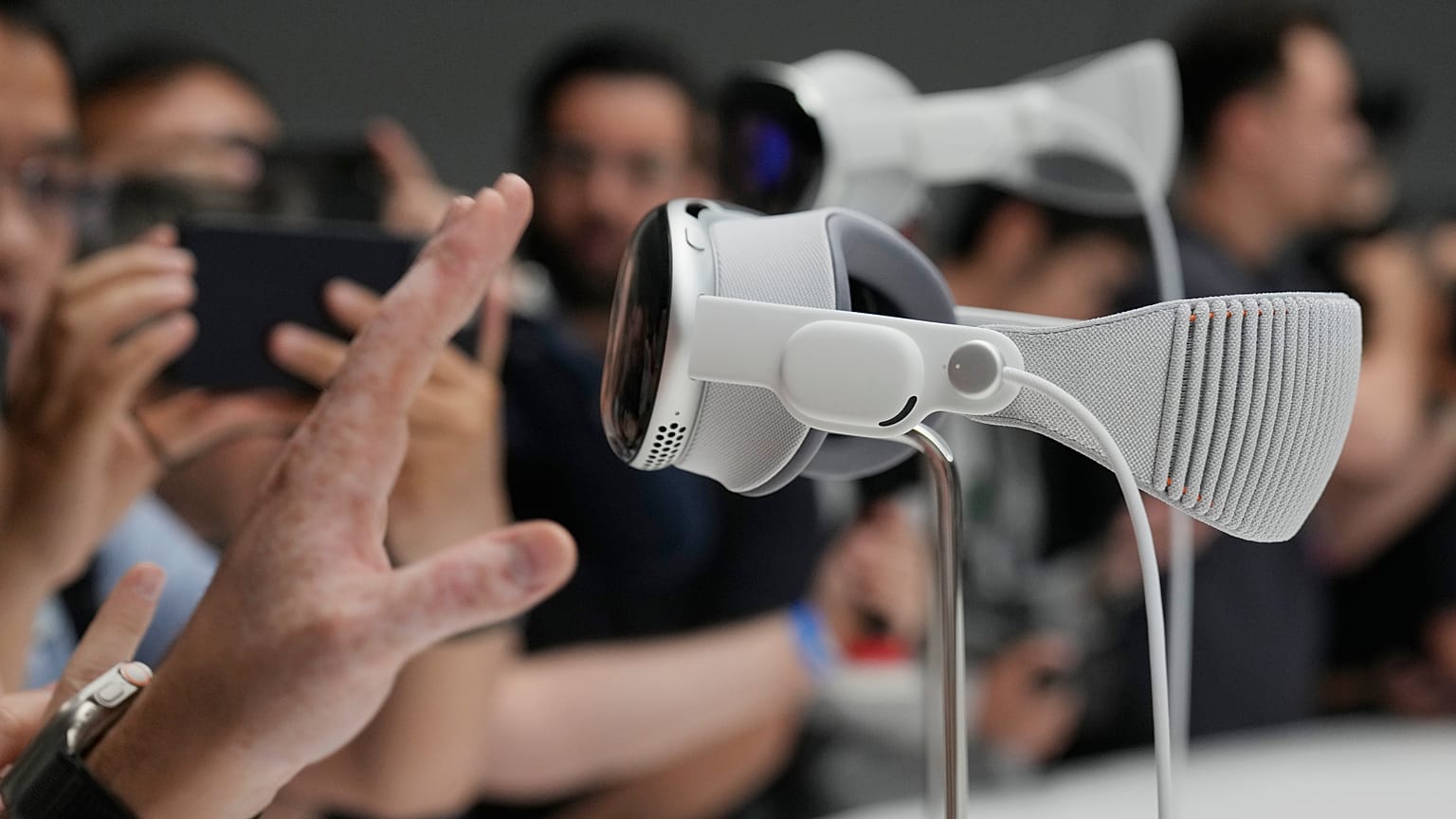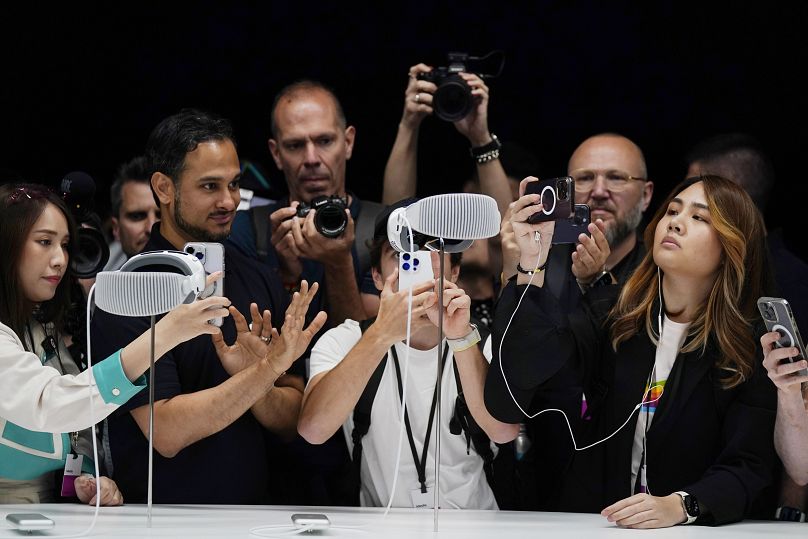The headset, which looks like a very fancy pair of ski goggles, will "seamlessly blends the real world and the virtual world," Apple CEO Tim Cook said.
Apple on Monday unveiled a long-rumoured headset that will place its users between the virtual and real world, while also testing the technology trendsetter's ability to popularise new-fangled devices after others failed to capture the public's imagination.
After years of speculation, Apple CEO Tim Cook hailed the arrival of the sleek goggles -- dubbed "Vision Pro" -- at the the company's annual developers conference held on a park-like campus in Cupertino, California, that Apple's late co-founder Steve Jobs helped design. The device will be capable of toggling between virtual reality, or VR, and augmented reality, or AR, which projects digital imagery while users still see can see objects in the real world.
"This marks the beginning of a journey that will bring a new dimension to powerful personal technology," Cook told the crowd.
Although Apple executives provided an extensive preview of the headset's capabilities during the final half hour of Monday's event, consumers will have to wait before they can get their hands on the device and prepare to pay a hefty price to boot. Vision Pro will sell for $3,500 once it's released in stores early next year.
Instead of merely positioning the goggles as another vehicle for exploring virtual worlds or watching more immersive entertainment, Apple framed the Vision Pro as the equivalent of owning an ultrahigh-definition TV, surround-sound system, high-end camera, and state-of-the-art camera bundled into a single piece of hardware.
"We believe it is a stretch, even for Apple, to assume consumers would pay a similar amount for an AR/VR headset as they would for a combination of those products," D.A. Davison Tom Forte wrote in a Monday research note.
Despite such scepticism, the headset could become another milestone in Apple’s lore of releasing game-changing technology, even though the company hasn’t always been the first to try its hand at making a particular device.
The headset will be equipped with 12 cameras, six microphones and a variety of sensors that will allow users to control it and various apps with just their eyes and hand gestures. Apple said the experience won't cause the recurring nausea and headaches that similar devices have in the past. The company also developed a technology to create a three-dimensional digital version of each user to display during video conferencing.
Although Vision Pro won't require physical controllers that can be clunky to use, the goggles will have to either be plugged into a power outlet or a portable battery tethered to the headset — a factor that could make it less attractive for some users.
Even so, analysts are not expecting the Vision Pro to be a big hit right away. That's largely because of the hefty price, but also because most people still can't see a compelling reason to wear something wrapped around their face for an extended period of time.
If the Vision Pro turns out to be a niche product, it would leave Apple in the same bind as other major tech companies and startups that have tried selling headsets or glasses equipped with technology that either thrusts people into artificial worlds or projects digital images onto scenery and things that are actually in front of them -- a format known as "augmented reality."
















